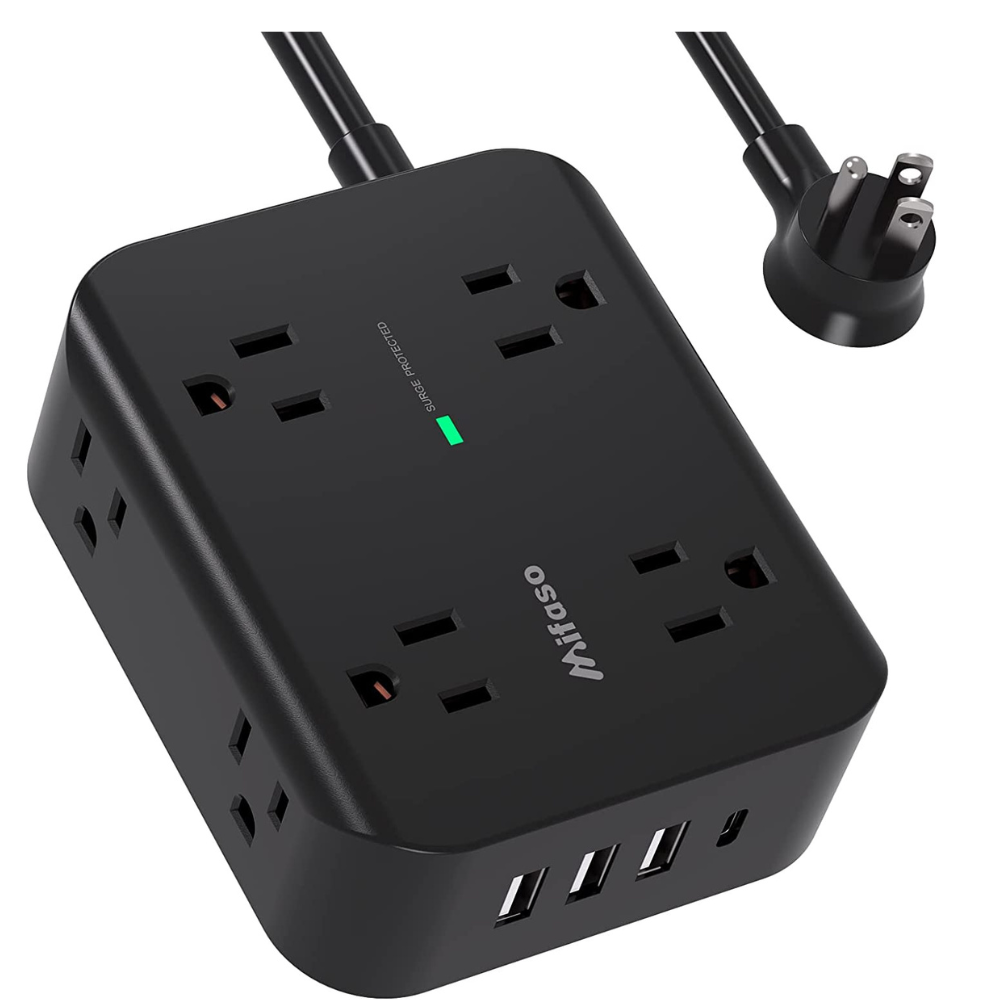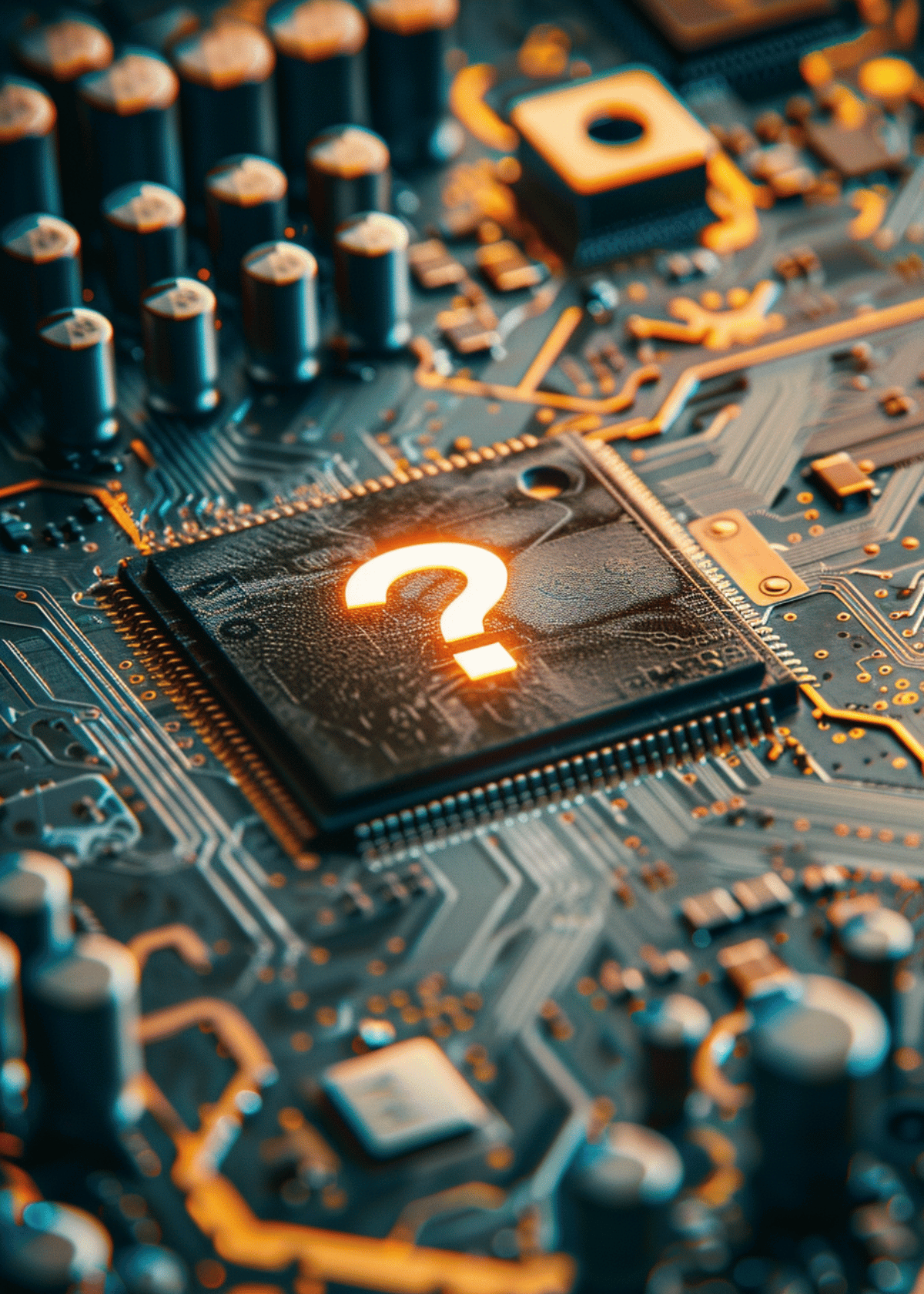What Appliances Need Surge Protectors? The Answer Will Leave You In Shock, But Not Your Kitchen!⚡

With more and more of our home electronics and appliances depending on sensitive circuitry and programming, a damaging power surge can wreck havoc in the blink of an eye. Your brand new big-screen TV, high-end gaming console, or smart home hub could get fried in an instant, costing you hundreds if not thousands of dollars to replace. The repair or data recovery costs from a fried computer or smartphone alone make surge protection a wise investment.
In this article, we'll look at the most vulnerable electrical devices that benefit greatly from added surge protection. We'll review major appliance categories like entertainment systems, computers, kitchen appliances, smart home gear, power tools, and more. You'll learn just how susceptible they are to power spikes and surges, as well as the potential risks of not using surge protectors. Our guide will help identify spots in your home where surge protection is most critical for avoiding expensive equipment failure and electrical fires. We'll also cover some key factors to consider when choosing the right surge protectors for optimal protection.
What is a Surge Protector? 👀

A surge protector is a device that protects electrical devices from power surges. It does this by diverting the surge to a grounding wire, which safely carries the surge away from the device. Surge protectors are important because power surges can damage or even destroy electrical devices. They can be caused by a variety of things, such as lightning strikes, power outages, and even switching on or off a large appliance. Surge protectors are relatively inexpensive and easy to install, so it is a good idea to have one for each of your important electrical devices.
Read More: Best Surge Protector for Gaming PC
How Do Surge Protectors Work? 🤔
Surge protectors work by diverting excess electrical current away from delicate electronics. Here is a more detailed explanation of how they work:
⏩ They have metal oxide varistors (MOVs) inside that act like voltage-sensitive resistors. MOVs remain highly resistive when voltage is at normal levels. However, if voltage spikes, the MOVs quickly switch to becoming conductive, shorting the extra voltage to ground.
⏩ They also contain capacitors that can absorb excess electrical energy. The capacitors smooth out power fluctuations and provide extra protection from spikes.
⏩ Some surge protectors have an internal fuse that will blow if the current rises above unsafe levels, sacrificing itself to protect connected devices. The fuse has to be replaced if this happens.
⏩ There is often an indication light that alerts if the MOVs have been triggered and the protection capacities are reduced. This signals it's time to replace the surge protector.
⏩ Higher-quality surge protectors will have a fast response time in diverting extra current and a higher joule rating, meaning they can absorb more energy before being damaged. This provides better protection for electronics.
➩ What Appliances Need Surge Protectors? 💡
In today's modern world, we rely heavily on various electrical appliances to make our lives more convenient and efficient. However, it is crucial to protect these appliances from unexpected power surges that can cause irreparable damage. Surge protectors are designed to safeguard our valuable electronic devices by diverting excess voltage away from them. While it is wise to use surge protectors for all electrical appliances, there are some that are particularly vulnerable and should never be left unprotected.
1. High-End Electronics
Expensive electronic devices such as televisions, home theater systems, gaming consoles, and audio equipment are highly sensitive to power surges. These devices often have delicate circuitry that can be easily damaged by sudden voltage spikes. Investing in a high-quality surge protector will ensure the longevity of these valuable electronics and protect your investment.
2. Computers and Laptops
Computers and laptops have become an integral part of our daily lives, both for work and leisure. These devices contain critical data and sensitive components that can be easily compromised by power surges. A surge protector with built-in surge suppression technology is essential to shield your computer from unexpected voltage fluctuations and prevent data loss or hardware damage.
3. Kitchen Appliances
While it may be surprising, kitchen appliances such as refrigerators, dishwashers, and microwaves can also benefit from surge protection. These appliances often have complex electronic controls and motors that can be susceptible to power surges. A surge protector will help ensure the smooth operation of these appliances and prevent costly repairs or replacements.
4. Home Office Equipment
If you have a home office setup, it is crucial to protect your valuable office equipment. Printers, scanners, routers, and fax machines are all susceptible to power surges. A surge protector with multiple outlets and sufficient joule rating will provide the necessary protection to keep your office equipment functioning optimally and prevent any interruptions in your work.
5. Entertainment Systems
Entertainment systems, including audio and video equipment, gaming consoles, and streaming devices, are often expensive investments. These devices are prone to damage from power surges, which can result in distorted sound, loss of picture quality, or even complete failure. By using surge protectors specifically designed for entertainment systems, you can enjoy uninterrupted entertainment and peace of mind knowing your devices are protected.
➩ How to Choose the Right Surge Protector for Your Appliances? 👍
Surge protectors are designed to safeguard your valuable electronic devices from voltage spikes and power surges. But with so many options available in the market, how do you choose the right surge protector for your appliances? Here are some key factors to consider.
1. Joule Rating
The joule rating is an important aspect to consider when selecting a surge protector. It indicates the amount of energy the surge protector can absorb before it fails to protect your appliances. The higher the joule rating, the better the surge protector can handle power surges. For most household appliances, a surge protector with a joule rating of at least 1000 joules is recommended. However, for more sensitive and expensive devices like computers or home theater systems, it is advisable to opt for surge protectors with higher joule ratings.
2. Clamping Voltage
Clamping voltage is another crucial factor to consider. It refers to the voltage level at which the surge protector starts to divert excess voltage away from your appliances. A lower clamping voltage means better protection for your devices. Surge protectors with clamping voltages below 400 volts are generally considered to be effective in safeguarding your appliances from power surges.
3. Number of Outlets
Consider the number of outlets you require before purchasing a surge protector. Count the number of devices you want to protect and ensure that the surge protector has enough outlets to accommodate all of them. It is also a good idea to choose a surge protector with a mix of regular outlets and those that can accommodate larger plugs or transformers.
4. Response Time
The response time of a surge protector is the time it takes for the surge protector to react and divert excess voltage away from your appliances. Look for surge protectors with fast response times, preferably less than one nanosecond. The quicker the surge protector responds, the better it can protect your devices from power surges.
5. Warranty and Connected Equipment Guarantee
Lastly, check the warranty and connected equipment guarantee provided by the surge protector manufacturer. A longer warranty period indicates the manufacturer's confidence in their product's performance. Additionally, some surge protectors offer a connected equipment guarantee, which means that the manufacturer will replace or repair any appliances that are damaged while connected to their surge protector.
⟹ How to Install a Surge Protector? 🔌
In this section, I will guide you through the step-by-step process of installing a surge protector to ensure the safety of your devices.

① Assess Your Needs and Choose the Right Surge Protector
Before diving into the installation process, it is important to assess your needs and select the right surge protector for your specific requirements. Consider the number of outlets you need, the joule rating (higher is better), and the clamping voltage (lower is better). Additionally, check for surge protectors that offer features such as USB ports or coaxial connections if you require them. Once you have determined your needs, purchase a surge protector that meets your criteria from a reputable manufacturer.
② Locate an Appropriate Power Outlet
Next, find a suitable power outlet near the area where you want to protect your electronic devices. Ensure that the outlet is easily accessible and not overloaded with other devices. Avoid using extension cords or power strips as they can diminish the effectiveness of the surge protector. It is recommended to have a dedicated outlet for your surge protector to maximize its performance.
③ Turn Off the Power and Connect the Surge Protector
Before proceeding with the installation, turn off the power supply to the outlet at the circuit breaker. This step is crucial to avoid any electrical shocks during the installation process. Once the power is turned off, plug the surge protector into the chosen outlet. Ensure that the surge protector's power switch is in the off position before proceeding.
④ Connect Your Devices to the Surge Protector
After successfully plugging in the surge protector, it's time to connect your electronic devices. Carefully plug each device into the surge protector's outlets, being mindful of the load capacity. Avoid overloading the surge protector by exceeding its maximum wattage rating. If you have devices with three-pronged plugs, ensure that the surge protector has grounded outlets to provide proper protection against power surges.
⑤ Test and Monitor the Surge Protector
Once all your devices are connected, it is crucial to test the surge protector to ensure it is functioning correctly. Most surge protectors come with a built-in LED indicator that shows if the protection circuit is active. Additionally, some models offer audible alarms or visual indicators to alert you in case of a fault. Regularly monitor the surge protector for any signs of damage or wear and tear. If you notice any issues, it is recommended to replace the surge protector promptly to maintain the safety of your devices.
How to Maintain a Surge Protector? 🔨
Just like any other electronic device, surge protectors require regular maintenance to ensure optimal performance and longevity. By following a few simple steps, you can keep your surge protector in top shape and extend its lifespan. Here, we will discuss some key maintenance tips for surge protectors.
✔️ Keep It Clean and Dust-Free
One of the easiest ways to maintain a surge protector is by keeping it clean and free from dust and debris. Over time, dust can accumulate on the surface and inside the unit, hindering its effectiveness. To clean your surge protector, unplug it from the power source and use a soft, dry cloth to wipe away any dust or dirt. Avoid using any liquid cleaners or abrasive materials, as they can damage the device.
✔️ Check for Damaged Cords or Plugs
Regularly inspect the power cord and plugs of your surge protector for any signs of damage. Frayed wires, exposed conductors, or loose plugs can pose a safety hazard and reduce the effectiveness of the surge protector. If you notice any damage, it is crucial to replace the cord or plug immediately. Using a damaged surge protector can increase the risk of electrical fires or damage to your connected devices.
✔️ Avoid Overloading the Surge Protector
Every surge protector has a maximum load capacity, and exceeding this limit can lead to overheating and decreased performance. To maintain your surge protector, make sure to avoid overloading it with too many devices. Check the user manual or the product label for the maximum load capacity and ensure that you do not exceed it. If you need to connect multiple devices, consider using additional surge protectors or power strips to distribute the load evenly.
✔️ Test the Surge Protection Functionality
Surge protectors are designed to divert excess voltage away from your devices, but they can wear out over time. To ensure that your surge protector is still functioning correctly, it is recommended to test its surge protection functionality periodically. Most surge protectors come with a built-in indicator light that shows if the protection is active. If the light is not illuminated or if it indicates a fault, it may be time to replace the surge protector.
✔️ Replace Old Surge Protectors
Lastly, it is essential to replace your surge protector regularly, even if it appears to be in good condition. Surge protectors have a limited lifespan, and their ability to provide adequate protection diminishes over time. As a general guideline, it is recommended to replace surge protectors every two to three years. By doing so, you can ensure that your electronic equipment remains safeguarded against power surges and voltage spikes.
👉 Common Surge Protector Problems and Solutions

Surge protectors are essential devices that help safeguard our electronic equipment from power surges and voltage spikes. However, like any other technology, surge protectors can encounter problems that may compromise their effectiveness. In this blog post, we will discuss some common surge protector problems and provide solutions to ensure your devices remain protected.
1. Overloading
One of the most common problems with surge protectors is overloading. When we connect too many devices to a single surge protector, it can exceed its maximum load capacity, leading to decreased performance and potential damage. To solve this issue, it is crucial to calculate the power requirements of your devices and choose a surge protector with an appropriate load capacity. Additionally, consider using multiple surge protectors or power strips to distribute the load evenly across different outlets.
2. Aging and Wear
Over time, surge protectors can deteriorate due to aging and wear. The components inside the surge protector may become less effective at suppressing surges, leaving your devices vulnerable. To address this problem, it is recommended to replace surge protectors every 2-3 years or as recommended by the manufacturer. Regularly inspect the surge protector for signs of wear, such as frayed cords or loose connections, and replace it immediately if any issues are detected.
3. Lack of Grounding
Proper grounding is essential for surge protectors to function effectively. If your surge protector is not properly grounded, it cannot redirect excess voltage away from your devices, rendering it ineffective. To ensure proper grounding, make sure your electrical outlets are grounded correctly. If you are unsure, consult a professional electrician to assess and rectify any grounding issues.
4. Power Surges and Lightning Strikes
While surge protectors are designed to handle power surges, severe lightning strikes can sometimes overwhelm even the best surge protectors. In such cases, it is advisable to unplug your electronic devices during a thunderstorm or use additional protective measures, such as whole-house surge protectors, to provide an extra layer of defense against lightning-induced surges.
5. Incompatible or Low-Quality Surge Protectors
Using incompatible or low-quality surge protectors can pose significant risks to your devices. Some surge protectors may not be designed to handle the specific power requirements of your electronics, leading to inadequate protection. Always choose surge protectors from reputable brands and ensure they are compatible with your devices. Look for surge protectors that meet recognized safety standards, such as UL (Underwriters Laboratories) or ETL (Intertek), to ensure their reliability and performance.
Time To Shock-Proof All Your Appliances Now! 🛡
Surge protectors are like the unsung heroes of our homes, quietly protecting our beloved appliances from unexpected power surges. While it's not necessary to slap a surge protector on every single device, it's important to prioritize those appliances that are not only expensive but also essential to our daily lives. Think about the big-ticket items like your computer, TV, and refrigerator. These powerhouses deserve the extra layer of defense against electrical mishaps. And let's not forget about those smaller gadgets that we rely on, such as smartphones, gaming consoles, and even our trusty coffee makers. By investing in surge protectors for these appliances, we can save ourselves from potential headaches and costly repairs. So, don't wait for a lightning strike to remind you of the importance of surge protectors. Take action now and give your appliances the protection they deserve. Your future self will thank you!





